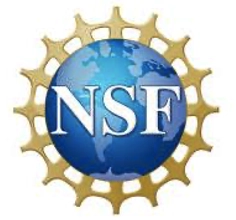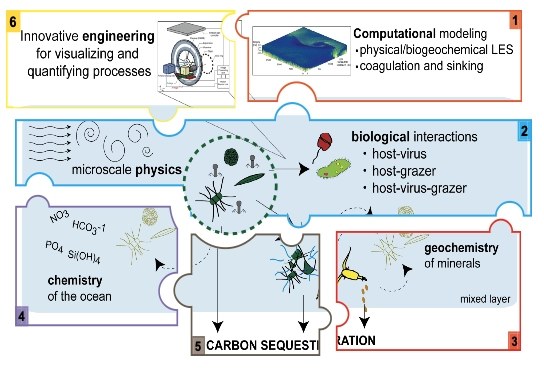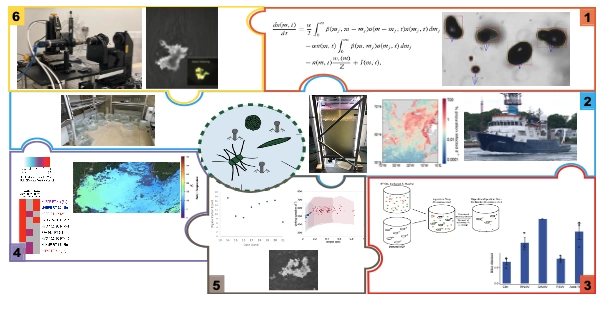The convergent impact of marine viruses, minerals, and microscale physics on phytoplankton carbon sequestration’ (OIA-2021032)

This project is an NSF-funded, multi-institutional, transdisciplinary Growing Convergence Research (GCR) project (OIA-2021032) led by Rutgers’ Kay Bidle (Department of Marine and Coastal Sciences, SEBS, RCEI). The project has brought together biologists/chemists/physicists/engineers/applied mathematicians/modelers/etc led by 15+ PIs (and their research groups) from Rutgers University-New Brunswick, the Woods Hole Oceanographic Institution, Stanford University, the University of New Hampshire, the National Center for Atmospheric Research (NCAR), the National Aeronautics and Space Agency (NASA), George Washington University, Old Dominion University, the Monterey Bay Aquarium Research Institute (MBARI) and others to understand the coalescence of marine viruses, biominerals, microscale physics and ecosystem interactions on phytoplankton carbon sequestration. The GCR program represents the National Science Foundation’s Ten Big Ideas (https://www.nsf.gov/news/special_reports/big_ideas/) with an emphasis on the need for the sciences to practice integrated, transdisciplinary approaches to solve diverse challenges facing our planet and humanity.

- Aim: Elucidate, quantify and develop predictive understanding and rules on the grand challenge of how viruses drive Earth’s carbon cycle
- Approach: Integrative, convergent ‘puzzle pieces’: innovative conceptual understanding, analyses, and tool development
- Application: Get to know…idea incubation…foster a common foundation of understanding…collective hypothesis generation…experiential co-incubation…creating trust and a comfortable space…develop convergence modules
Our convergent research activities have been numerous and multifaceted they have taken the shape of interactive puzzle pieces as part of a cohesive and convergent picture…layered across disciplines, methodologies and approaches. This has both challenged and catalyzed our coming together.


